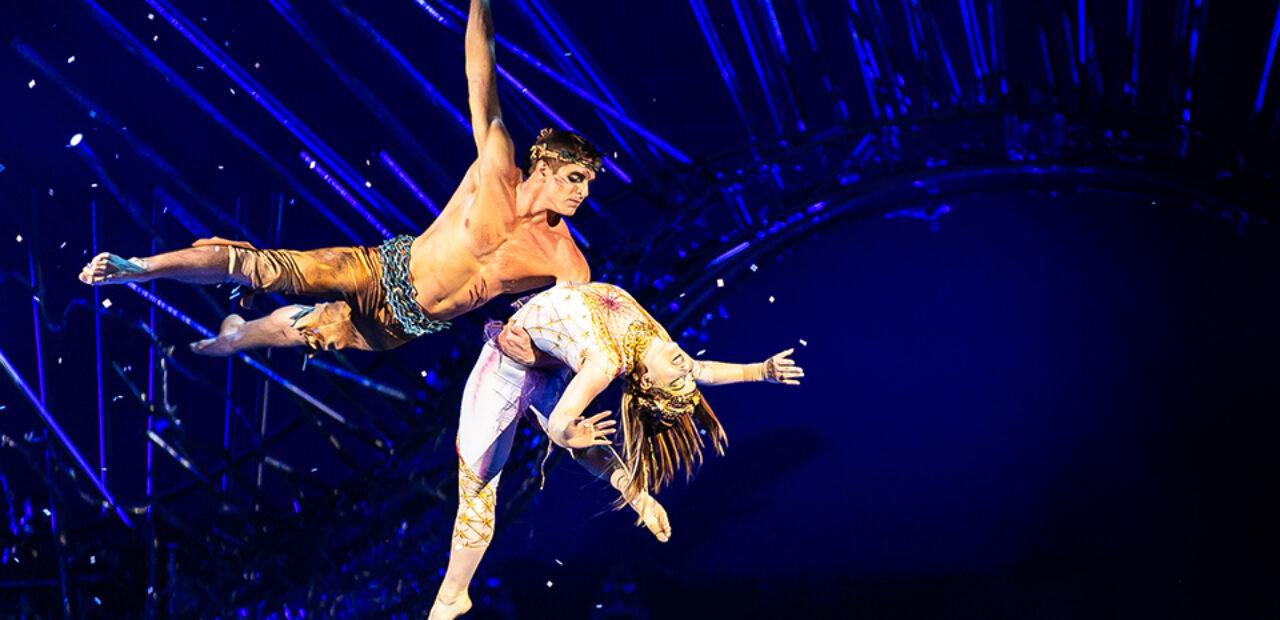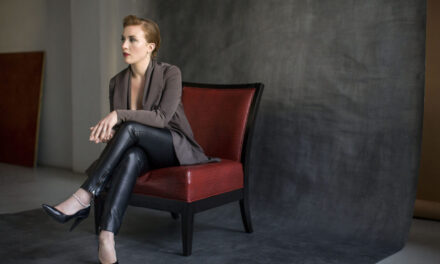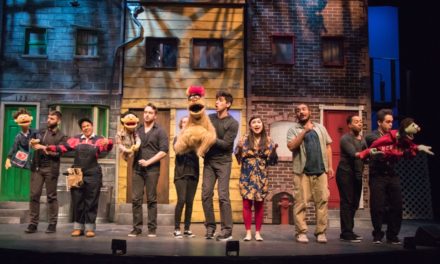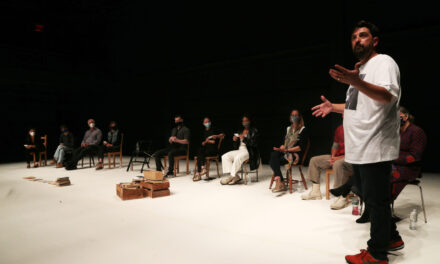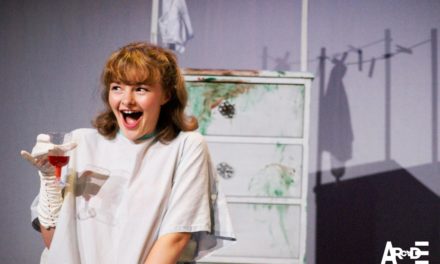Time has passed and even if Alegría does not capture the in depth artistry brought about by memory, desire and all that swirls in a mind returning to its past inspired by Fellini’s cinema that made Corteo so special, Alegría, created in 1994, did define a brand new circus aesthetic that has grown with the company, especially since its work in Las Vegas.
This renewed Alegría has some wonderful strengths that will certainly attract all audiences. Its joking clowns, the ultimate virtuosity of its trapeze artists, high wire dancers, individuals who can keep their balance and fly through the air at any distance, its fearless living and breathing fire creature who seems to emerge from the flames making the audience roar with pleasure and astonishment, a beautiful contortionist who transforms her art as she twists and rolls in and out of the rings that slide over her body. A team of strong pole vaulters who seem to be fused to those long flexible poles as they construct new forms that catch and create leverage in space as the men leap and twist and do countless somersaults in the air, catching each other and barely appearing to avoid disaster as the bodies fly away. while the audience watches with bated breath. The choreography of each group built up enormous tension as the lighting effects, (flashing thunder clouds and wildly blowing snow storms) brought much dramatic effect to each of the numbers as those beautiful bodies draped in glowing costumes performed their impeccable numbers with such strength and utter perfection they all became mythical creatures emerging from the dark and returning to the dark, leaving us breathless.
Nevertheless, the first Act of Alegría was still very much tied to a more traditional understanding of a Circus performance with individuals doing their acts then moving off stage. Much later Corteo went far beyond this purely circus form of entertainment but Alegría was not yet there in Act I.
The Clowns, traditional circus creatures, who appeared here to be tattered aristocrats in very expensive but worn out dress, kept interrupting the show with their playfulness, their hugely deformed bodies, as clowns tend to have. There was no doubt that their presence was a choice made to break the tension, add pathos to a performance that really did not need it. The sad and sorrowful emotions were prolonged, making the presence of these clowns even more disruptive as they diminished the wonderment that the performances of Act II produced because something extremely exciting happened at that point in the show.
Trapeze acts, magical aerial encounters, a form of flying away on new high energy trampolines acts and the interaction of numerous flying bodies that barely avoid crashing into each other as they zoom through the air taking magical leaps into the sky, brought enormous excitement, tinged with sensual pleasure at the site of those beautiful male and female bodies taking what seemed to be enormous risks in the air. A new form of interaction grew out of the virtuosity of the whole group. The aerealists twisting and intertwining on the end of huge ropes swinging up and diving down to the ground as the male figure scoops up the woman in a strong embrace and then the two of them go soaring into the sky barely hanging from a wrist, or an aerial strap that appeared so fragile as the male smiles and gathers his partner in a warm embrace. The sexual excitement was enormous. The athletes of this synchronized trapeze duo became strong actors, as well as acrobats, creating emotional moments of great strength and pure passion. Act II, became the continuation of the show where the actors/acrobats seemed to take on greater risks, establish a more powerful emotional link with the partners that made all the difference.
The creatures from the sidelines stepped out from behind flashing mirrors and strange other worlds as they were transformed into beings from another planet, creatures we could barely recognize. Teams of 10 or 12 leaping creatures flew into the air at once, pounding on the trampolines set up as a huge cross where the bodies went hurtling down the path of multiple criss-crossed shapes, juggling surfaces as we watched almost horrified. Some of the recognizable faces were now decked out in gleaming material, scarves twisted around their heads, in costumes that evoked exotic places, various clans and competing tribes took their places in the Alegría space as exciting emotions promised great things for the onlooker. The passion exploded. I felt my heart pound and my body could not sit still, until the final moments when the strange snowflake angels rose to the height of the big top and literally fell out of the sky like a swarm of beautiful glittering creatures ready to swoop to the ground and bring down the house. The space within the big top was no longer definable. The creatures flying through the air were too otherworldly to imagine. They carried an enormous dose of eroticism and excitement, and even followed us out into the night where the flashing lights and speeding cars maintained that other world atmosphere for a long time. There was a strange sense that something around us had been transformed!!! Alegría had invaded my gaze and I could not escape it!
Congratulations to acrobatic choreographer and performance designer Émilie Therrien, to costumes designer Dominique Lemieux, to set and props designer Anne-Séguin Poirier, to lighting designer Mikki Kunttu. René Dupré’s music was at time a bit blurry because the acoustics were not the best under the big top, but the percussions were very powerful and imposed rhythms and that were important to the whole. The list of the creative team is long, but they all worked so well together and created a show that finally went far beyond our expectations.
This article was originally posted on capitalcriticscircle.com on August 14th, 2019. Read the original article.
This post was written by the author in their personal capacity.The opinions expressed in this article are the author’s own and do not reflect the view of The Theatre Times, their staff or collaborators.
This post was written by Alvina Ruprecht.
The views expressed here belong to the author and do not necessarily reflect our views and opinions.

